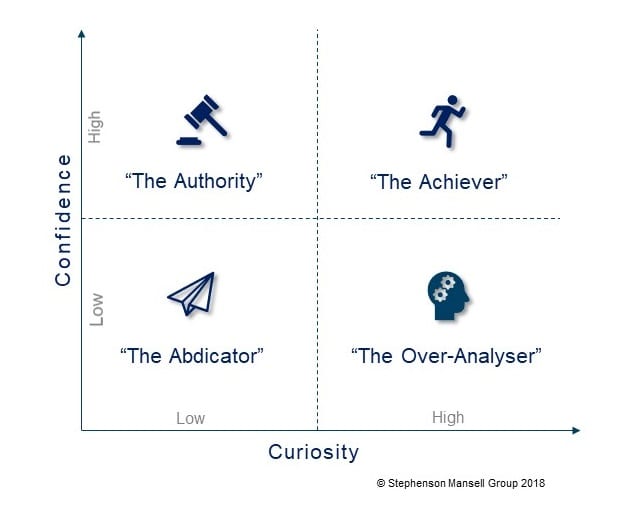Why leaders need to be more curious
In a recent report about the Commonwealth Bank, the financial regulator APRA highlighted a culture of complacency at the executive level, fuelled by an overconfidence that led to senior leaders becoming too insular.
One of APRA’s recommendations was that the board and executives need to demonstrate more intellectual curiosity and critical thinking about the ‘bigger picture’.
That’s no surprise. In our work over the last two decades with more than 6,000 senior leaders across more than 500 organisations in all industries and sectors, we’ve seen that intellectual curiosity too often gets lost behind a smokescreen of overconfidence.
In the context of leadership, we define ‘confidence’ as the feeling of certainty that a leader has in a decision, as well as their willingness to stand by that decision.
We define ‘curiosity’ as a strong desire and ability to make an informed decision through an open mind and willingness to look at the bigger picture. Curiosity, in a sense, is the antidote to overconfidence.
In their decision making, leaders need high levels of both confidence and curiosity. Too much or too little of either can have an adverse impact on the performance and engagement of individuals, teams and an organisation as a whole.
Through analysing senior leaders and their teams, we’ve mapped the relationship between confidence and curiosity in decision making in the form of ‘personas’:

“The Abdicator”
Low Confidence, Low Curiosity: Disengaged decision-making
Low levels of belief in a decision, or an inability to assert a good decision coupled with insular thinking or indifference, means Abdicators tend to avoid tough decisions. They will create the illusion of empowerment when the real motivator is indifference. Trust quickly evaporates.
“The Over-Analyser”
High Curiosity, Low Confidence: Complex decision making
When there’s an over reliance on information-gathering borne of doubt, the decision-making process becomes complex and can grind to a halt. Alternatively, too much collaboration or collegiality can result in the loss of critical thinking and there can be slippage from outcomes, creating additional organisational risk. Ultimately teams lose faith in the leader and the decision-making process.
“The Authority”
High Confidence, Low Curiosity: Biased decision-making
An authoritative approach to decision-making can be useful but, in the absence of curiosity, decision making is distorted by unconscious biases. There is also dissonance between the leader’s feelings of confidence in a decision and that of the team, leading to push back or disengagement and, at worse, resignation.
“The Achiever”
High Confidence, High Curiosity: Agile decision-making
Grounded critical thinking and big picture analysis eliminates unconscious biases and offers certainty which leads to agility in decision-making. Demonstrated curiosity also galvanises teams, builds psychological safety and creates a ‘coalition of the willing’ who innovate, grow, and achieve organisational outcomes.
There are three requirements to ensure the right balance of confidence and curiosity:
1. Getting the dynamics right
One way to do this is by categorising the types of decisions that need to be made and having the right people and processes in place to ensure agile decision-making. For example, a decision ‘on the run’ needs a different approach to one on which ‘you’re betting the house’.
2. Knowing your decision-making ‘style’
How we make decisions is influenced strongly by our beliefs, values, experience and how our brains are ‘hard-wired’. Under pressure we tend to default to these thinking and behavioural styles: some people can make ‘snap judgments’ quickly while for others, quick decision-making creates anxiety or even mental paralysis.
3. Building the mindsets and skillsets of confidence and curiosity
Knowing your decision-making style is the first step of capability-building in decision-making. The next step is to develop the specific skills that build confidence, curiosity and dexterity, such as listening, critical thinking, probing, and developing a ‘growth’ mindset.
There’s an interesting paradox in all of this. In the complexity and ambiguity of today’s work environment, leaders are being asked to make the complex simple, and at speed.
But simplicity is the hardest thing of all.
Written by Joe Fischer and Mehul Joshi.








